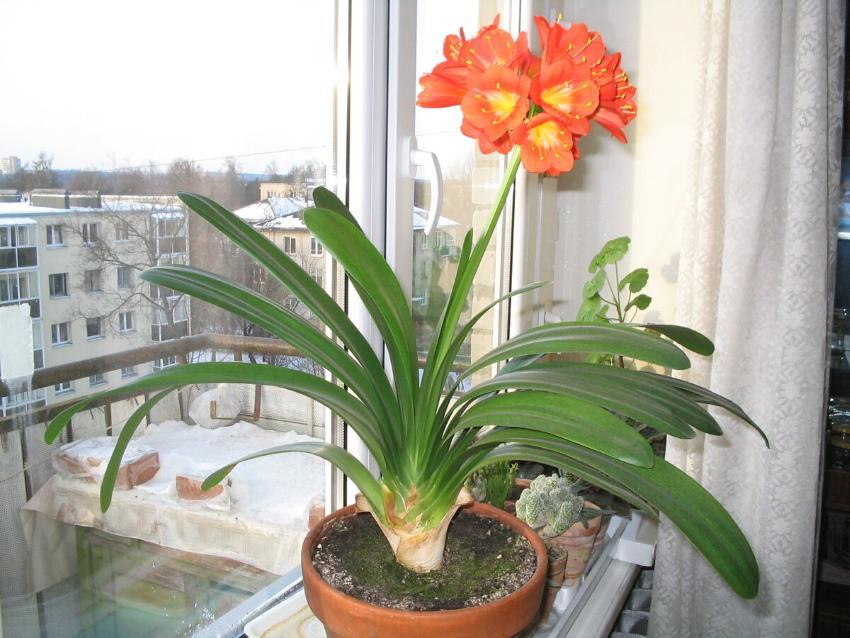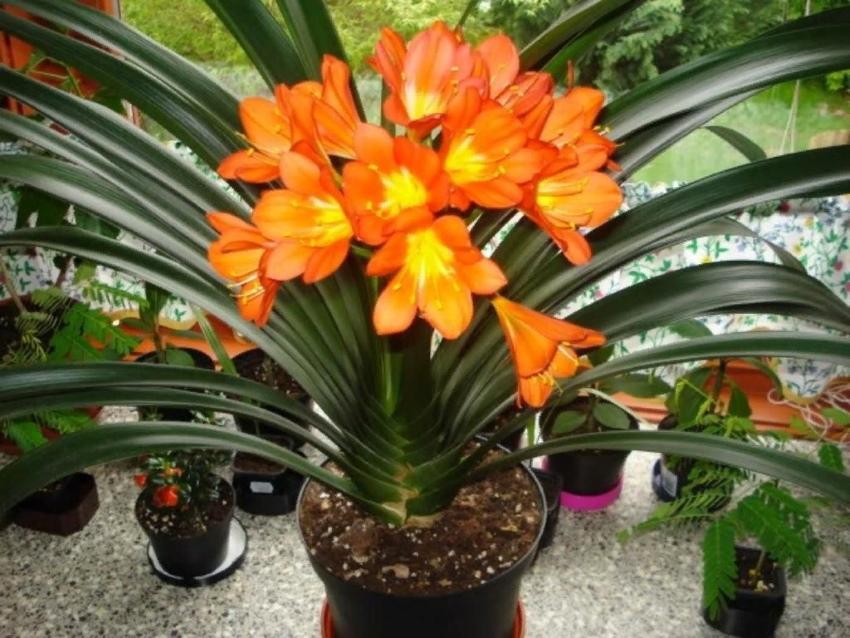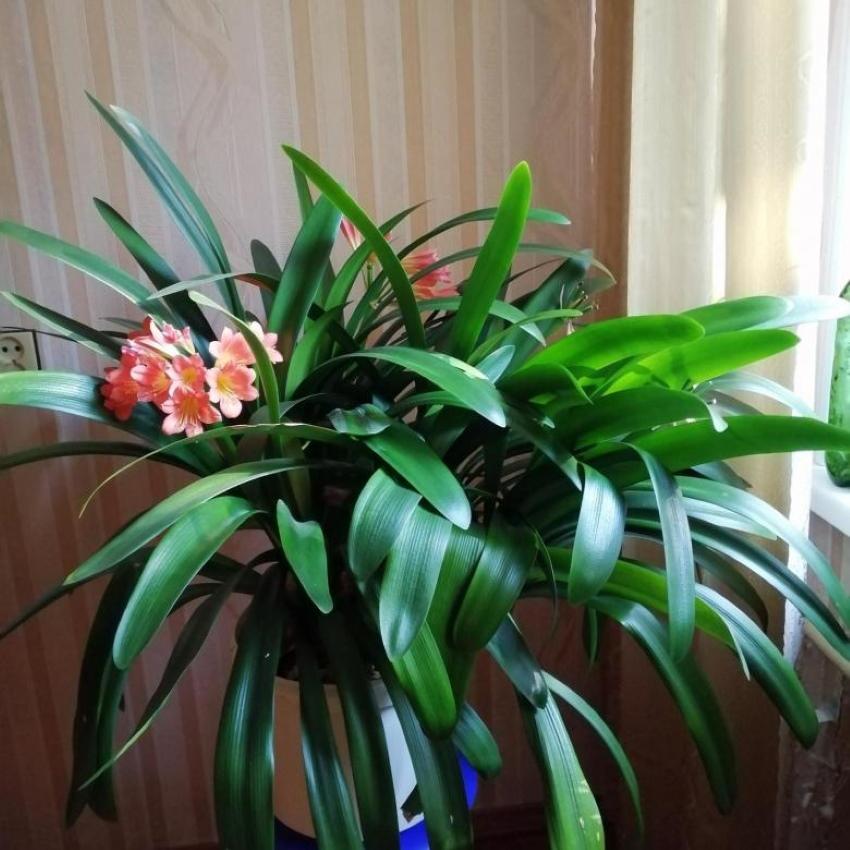Features of growing cinnabar clivia - a charming and whimsical African woman
 Indoor plants are beautiful already because they turn green all year round, but those that bloom in winter are especially amazing. For example, the beautiful clivia will not only delight you with winter flowering, but can also repeat it in the fall. However, in order for it to really show itself in all its glory, it is important to study the peculiarities of growing cinnabar clivia. It is this variety that is most often found on window sills. In general, it grows only at home, but in nature it is extremely rare to see culture.
Indoor plants are beautiful already because they turn green all year round, but those that bloom in winter are especially amazing. For example, the beautiful clivia will not only delight you with winter flowering, but can also repeat it in the fall. However, in order for it to really show itself in all its glory, it is important to study the peculiarities of growing cinnabar clivia. It is this variety that is most often found on window sills. In general, it grows only at home, but in nature it is extremely rare to see culture.
What is a flower

In February or early March, a high (more than 30 cm) and ribbed peduncle appears from the center of the rosette. It can have more than 25 flowers, collected in an umbrella, bright orange. At the base, they are lighter, with a transition from yellow to white. With good care, re-flowering can be seen in September - November.
To obtain seeds, flowers are artificially pollinated during the period of their mass blooming.
Features of growing clivia cinnabar
 Native to South Africa, however, the plant does not tolerate heat in the house. Even in summer it is desirable that the temperature in the room does not rise above 25 ° C. When the flower arrow appears, you should completely lower it to 20 °. But the most important thing is that from October to December, the clivia should rest at temperatures no higher than 14 ° C. Without this, it will not bloom, or flowering will become a rare and not so colorful phenomenon.
Native to South Africa, however, the plant does not tolerate heat in the house. Even in summer it is desirable that the temperature in the room does not rise above 25 ° C. When the flower arrow appears, you should completely lower it to 20 °. But the most important thing is that from October to December, the clivia should rest at temperatures no higher than 14 ° C. Without this, it will not bloom, or flowering will become a rare and not so colorful phenomenon.
Lighting also plays an important role: it should be bright, but without direct rays. East and west are the most optimal places for a flower, but the north and south windows should be abandoned.
Clivia care depending on the growing season
 All care measures should be adjusted taking into account the phase of flower development and the season:
All care measures should be adjusted taking into account the phase of flower development and the season:
- Watering. During the dormant period, it is extremely limited, only so that the soil does not dry out, and the bush does not shed its foliage. Then gradually increase the amount of fluid. With the onset of flowering, it is important that the top layer of the substrate has time to dry out.
- Top dressing. Only in spring and summer liquid fertilizers.
When clivia is in bloom, it is important not to rearrange the pot, and if necessary, keep the plant in its original position. After the arrow has dried, you can cut it off. Regarding the transplant, the clivia does not really like this procedure. Given that it must be grown in a small pot, young bushes need to be transplanted annually.But adult specimens are enough to transplant once every 3 years.